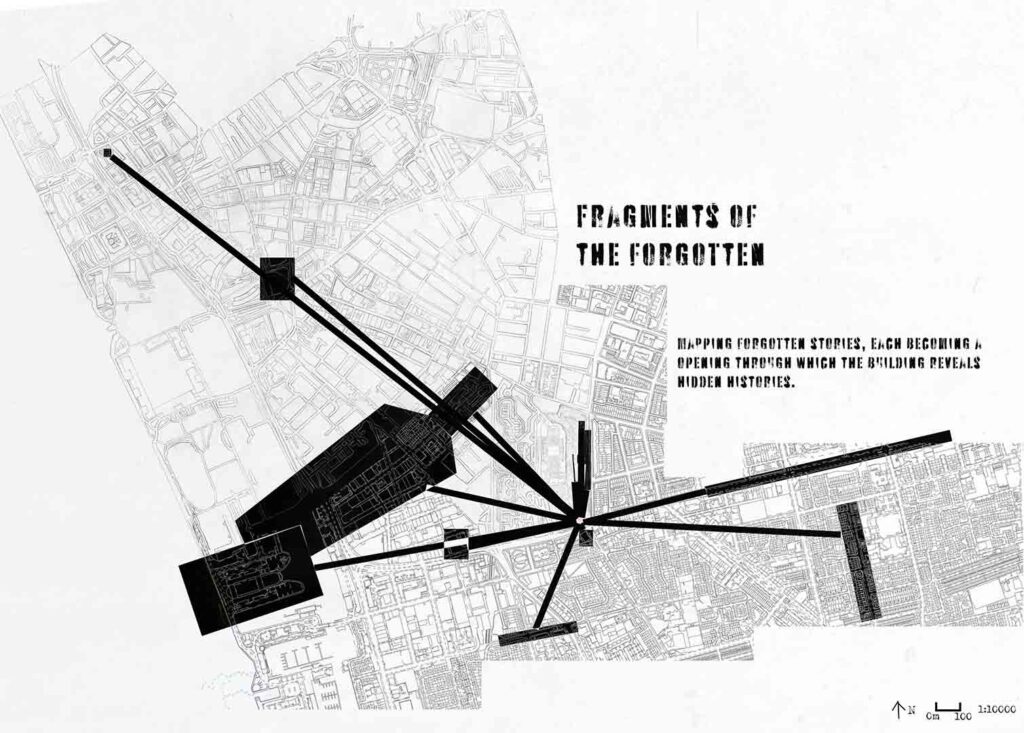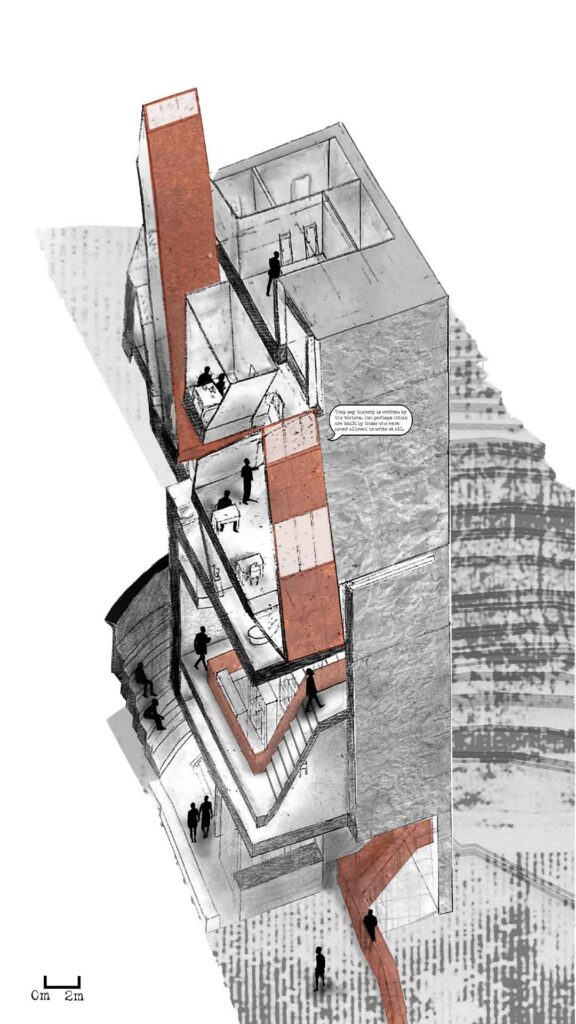In a city built on the legacies of empire, this project asks: Whose ruins do we preserve, and whose do we choose to forget? Sparked by a walk I called Imperial Footnotes, this work traces the hidden silences embedded in Liverpool’s architecture.
This space is not a monument to power. It is a space where memory can surface, where silence becomes material. Influenced by filmmaker John Akomfrah’s fragmented approach to history, the design resists linear narratives. It listens before it speaks.

This project proposes a permanent home for Writing on the Wall, an organisation dedicated to recovering and sharing forgotten histories. The building becomes a vessel for their work, providing space to write, research, publish, and gather. A living archive embedded within the city’s fabric. Here, empathy is not sentiment — it is method. The building holds fragments, names, echoes; not as decoration, but as testimony.
Rooted in the soil of St James’s Garden, a place of buried bodies and buried histories, this project proposes architecture as a vessel for remembering differently — not to retell empire, but to rupture it.
Gallery
Click to enlarge






